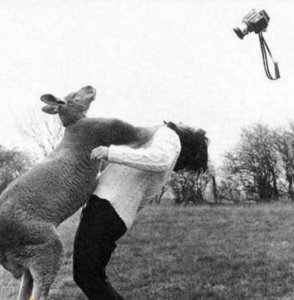 Picture the scene…a middle aged man digging in his garden, when he hits an object, possibly a root, which slows his spade. Lifting the top 3 inches of turf away, he clears the space to find that the object is an intact, unfired rifle cartridge – complete with bullet. He thinks ‘Hmmm – either an intact live cartridge or a replica, but 3 inches under my lawn‘ and decides to call the police non-emergency helpline to request its secure collection (the nearest police station is over 10 miles away).
Picture the scene…a middle aged man digging in his garden, when he hits an object, possibly a root, which slows his spade. Lifting the top 3 inches of turf away, he clears the space to find that the object is an intact, unfired rifle cartridge – complete with bullet. He thinks ‘Hmmm – either an intact live cartridge or a replica, but 3 inches under my lawn‘ and decides to call the police non-emergency helpline to request its secure collection (the nearest police station is over 10 miles away).
The helpline service is reasonably helpful – it automatically patches the call to his county police constabulary and after a little wait he gets through to a real person. The operator is personable and thorough, takes note of the details (the middle-aged man used to be a marksman, so knows a bit about bullets and was able to convey this). The operator agrees to call back to arrange the collection.
About 5-10 minutes later the Police helpline operator calls back and informs the man that after consultation with her supervisor they have advised that the bullet is simply disposed of. The man suggests that he will not throw it in a fire or anything, but how should he dispose of it? He is told to put it in a bag and pop it in the dustbin.
The waste bin was collected by the council service that day…
The man, knowing a bit about ammunition, had already decided that he will not put the bullet in the waste and instead plans to find a way of getting it to the authorities – ‘waste worker shot in freak accident‘ is not a headline he wants to see in the Sunday newspapers.
Two minutes later the helpline call again: ‘sorry‘, says the operator ‘my supervisor and I have spoken to the inspector who suggests we get someone to collect this bullet from you. You haven’t thrown it away have you?…‘
What is the point of this story? It is this:
However good your procedures and however willing and polite and committed your operators, a helpline service must have expertise at the point of transaction – the operator. If not, you tend to add re-work (e.g. lots of follow-up calls) or waste (or worse).
Sadly, most advice centres are NOT designed this way, instead using less-qualified people on the phones; creating waste, error & discouraging users.
In this instance neither the operator nor their supervisor had the expertise (or judgement) to make this decision. How did the discussion and advice arise between call 1 and 2? How did the second discussion with the inspector arise – was it luck, or part of the procedure of escalation? What would have happened if the inspector had not been there? What if the man HAD put the bullet in his dustbin? What if the man had gone shopping before the third call was made?
How many police would have been required to search the man’s bin, or worse, the contents of 5,000 bins at the council refuse centre had the bin been collected? Or what if all bin lorries had to be stopped on the roads for inspection to remove the suspect bullet? What if the bullet had exploded? You get the point.
This was a real incident involving real people on a Bank Holiday Monday sometime in the past year. You really couldn’t make it up.
Further reading on call centres:
Seddon, J. (2005) Freedom from Command and Control, Vanguard Press, Buckingham, UK.















